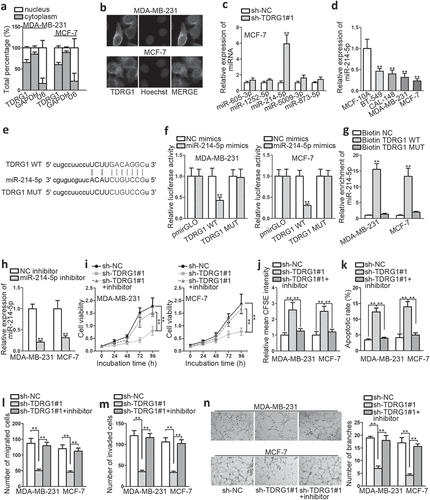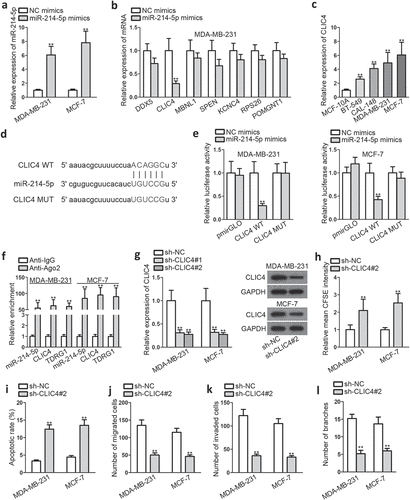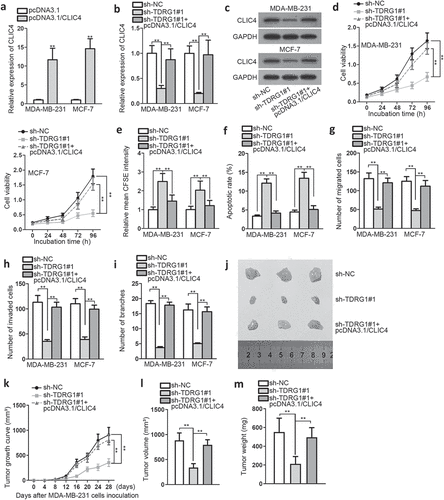Figures & data
Figure 1. TDRG1 is prominently up-regulated in BC and knockdown of TDRG1 impedes malignant behaviors of BC progression in vitro

Figure 2. TDRG1 exerts oncogenic properties in BC via negatively regulating miR-214-5p

Figure 3. TDRG1 exerts positive effects on CLIC4 expression by negatively regulating miR-214-5p

Figure4. TDRG1 expedites cell proliferation and migration by regulating miR-214-5p/CLIC4 axis

